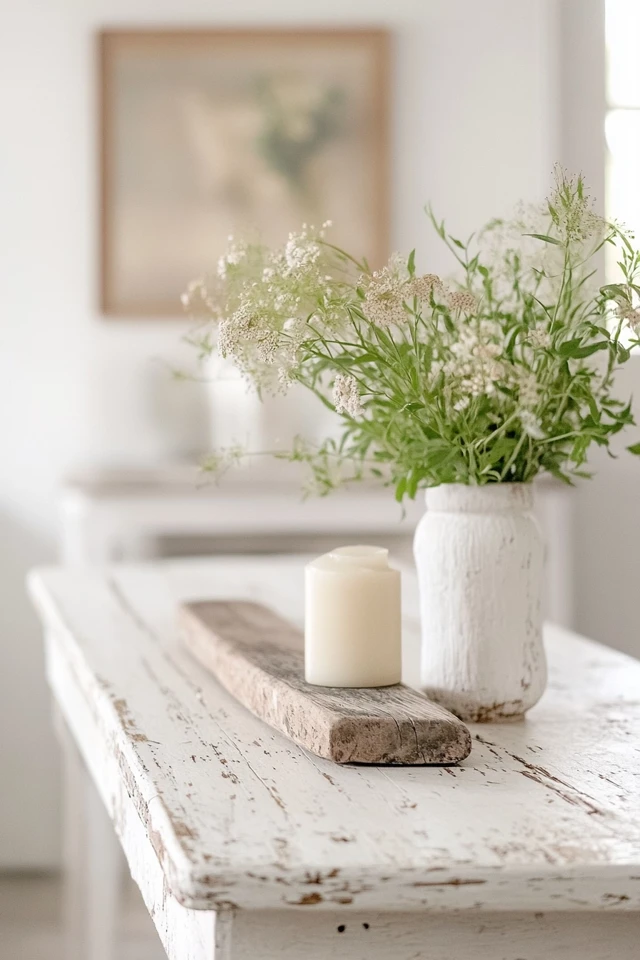Introduction
Whitewashed finishes and farmhouse design go together like fresh bread and butter—they’re a match made in rustic heaven. I still remember the first time I tried my hand at whitewashing furniture. It was a weathered coffee table I found at a thrift shop, covered in years of wear and tear. I wanted to breathe new life into it without losing its character, and whitewashing seemed like the perfect solution.
After a bit of trial and error (and some messy hands), the result was better than I could’ve imagined. The whitewashed finish softened the imperfections in the wood, giving the table an airy, vintage charm. It became the centerpiece of my living room and a conversation starter whenever guests came over. From that point on, I was hooked on the transformative power of whitewashed finishes.
If you’re drawn to the light, breezy look of farmhouse interiors, whitewashing is a must-have technique. It’s versatile, timeless, and easy to achieve—even if you’re new to DIY projects. In this guide, I’ll share everything you need to know about incorporating whitewashed finishes into your farmhouse décor, from walls and furniture to smaller decorative accents.
What Is a Whitewashed Finish?
Whitewashing is a decorative technique that involves applying a thin layer of diluted white paint to a surface. This allows the natural texture of the material—usually wood or brick—to show through, creating a soft, weathered look.
Why Whitewashing Works for Farmhouse Interiors
- Rustic Charm: It highlights the natural beauty of wood while softening its tone.
- Light and Airy Aesthetic: Whitewashing brightens up a space without overpowering it.
- Versatility: It pairs beautifully with other farmhouse staples like shiplap, reclaimed wood, and metal accents.
Where to Use Whitewashed Finishes in Farmhouse Décor
1. Whitewashed Wood Furniture
One of the easiest and most impactful ways to incorporate whitewashing is with furniture.
- Tables: Transform an old dining table or coffee table into a farmhouse showpiece.
- Chairs and Benches: Give mismatched seating a cohesive look with a whitewashed finish.
- Dressers and Nightstands: Add charm to bedroom furniture while preserving the wood’s grain.
Pro Tip:
Start with solid wood pieces for the best results, as the natural grain enhances the final look.
2. Whitewashed Walls and Paneling
Whitewashed walls create a serene, cottage-inspired vibe.
- Shiplap: Apply a whitewashed finish to shiplap walls for a classic farmhouse aesthetic.
- Brick Walls: Whitewashing exposed brick softens its appearance while maintaining its texture.
- Wood Paneling: Brighten dark wood paneling in older homes with a light whitewashed effect.
Pro Tip:
For a subtle look, apply a single coat of diluted paint. For more coverage, layer multiple coats until you achieve the desired effect.
3. Whitewashed Floors
Whitewashed wood floors are a beautiful foundation for farmhouse interiors. They add brightness and make small spaces feel larger.
- Materials: Oak, pine, and other light woods work best for this technique.
- Sealing: After whitewashing, apply a protective sealant to prevent wear and tear.
4. Whitewashed Beams and Ceilings
Exposed beams are a hallmark of farmhouse design. Whitewashing them can make a room feel less heavy while maintaining its rustic charm.
Pro Tip:
If your ceiling has wooden planks or panels, whitewashing the entire surface creates a cohesive, airy look.
5. Decorative Accents
Not ready to commit to larger surfaces? Start with smaller accents like:
- Picture frames
- Trays
- Candleholders
- Wooden signs
These pieces are easy to DIY and add subtle farmhouse flair.
How to Achieve a Whitewashed Finish
Ready to try your hand at whitewashing? Follow these simple steps:
Materials:
- White paint (water-based or chalk paint works best)
- Water
- Sandpaper
- Brush or lint-free cloth
- Drop cloth and gloves
Steps:
- Prepare the Surface:
- Sand the surface to remove any old finishes or rough spots.
- Clean the surface to remove dust and debris.
- Mix the Whitewash:
- Combine equal parts water and white paint. For a thicker look, use less water.
- Apply the Whitewash:
- Use a brush or cloth to apply the mixture in long, even strokes.
- Work in small sections to ensure consistent coverage.
- Wipe Away Excess:
- Use a clean, dry cloth to wipe off excess paint before it dries. This creates the translucent effect that defines whitewashing.
- Let It Dry:
- Allow the piece to dry completely before deciding if additional coats are needed.
- Seal (Optional):
- Apply a clear matte or satin sealant to protect the finish, especially for furniture or floors.
Picture Gallery
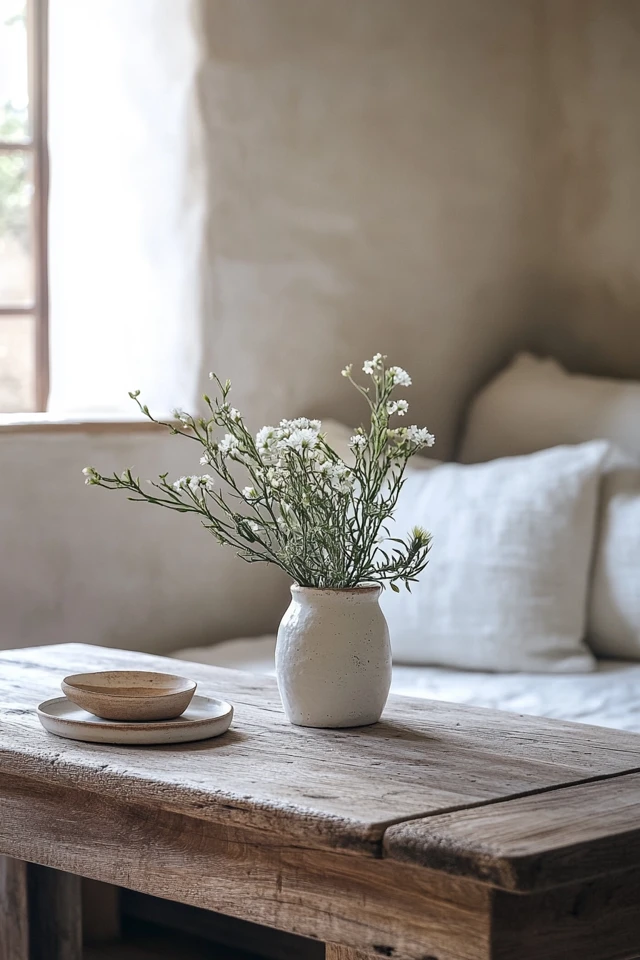
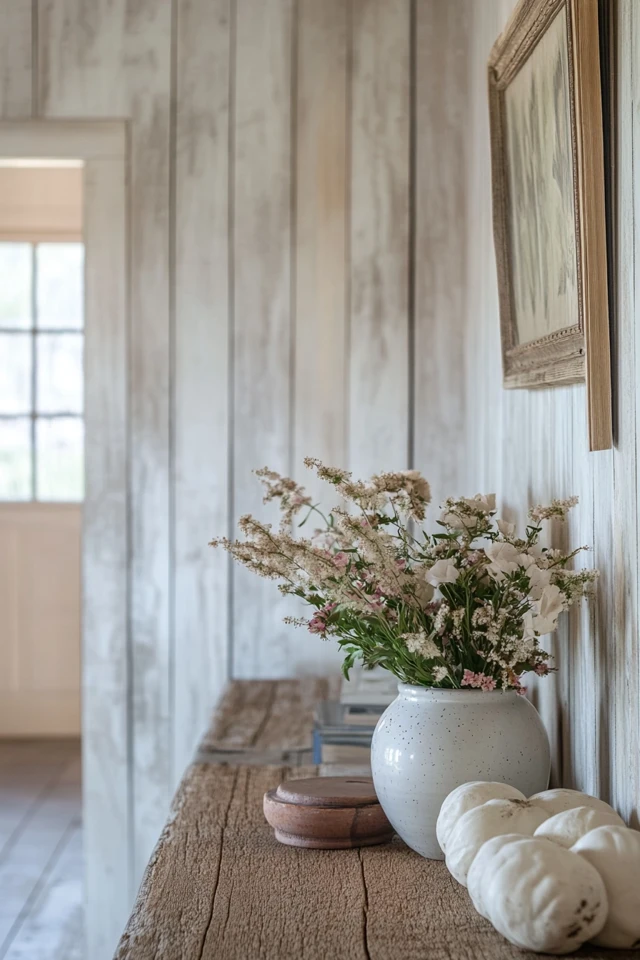
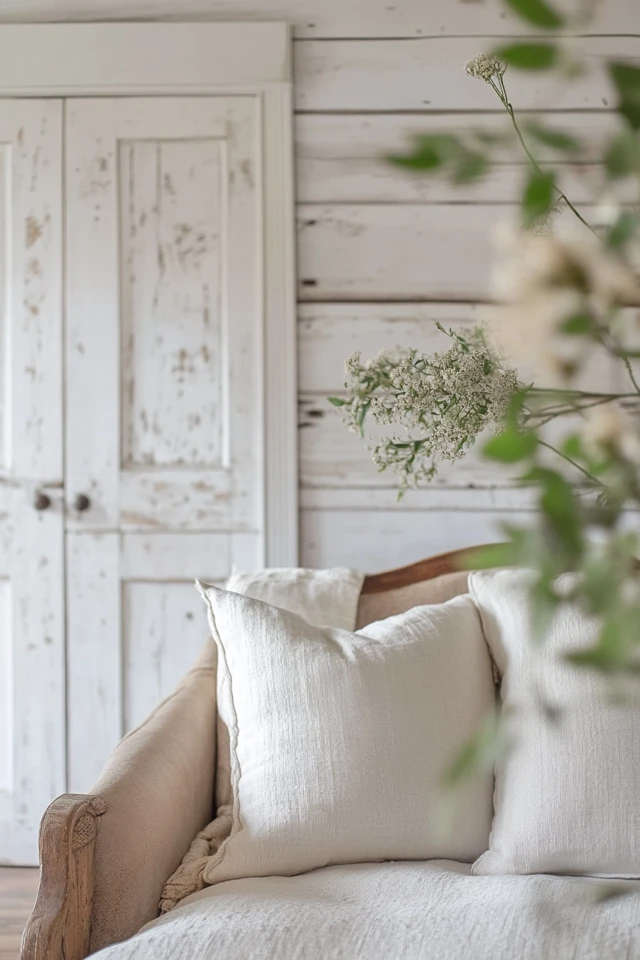
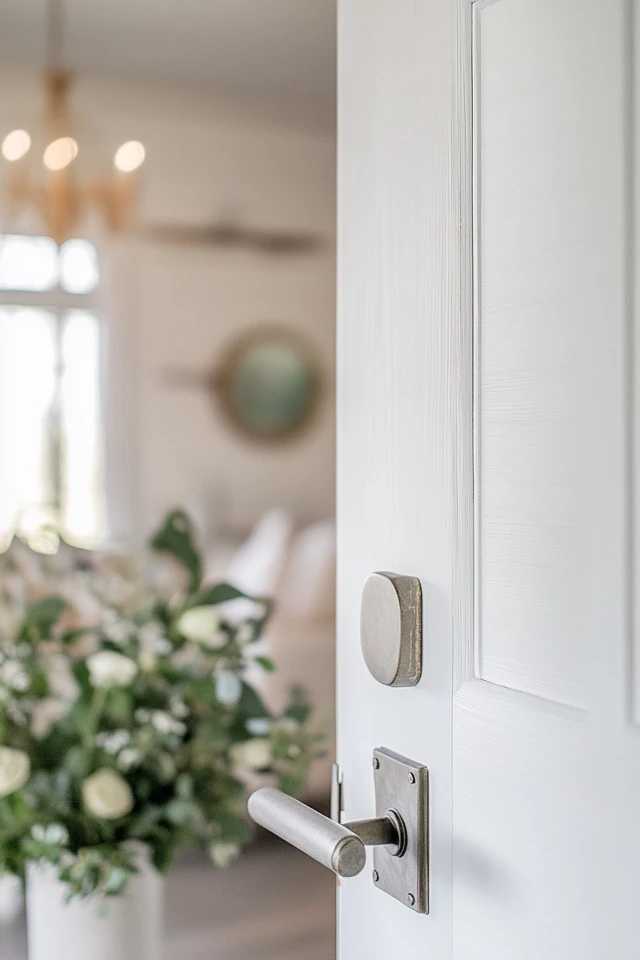

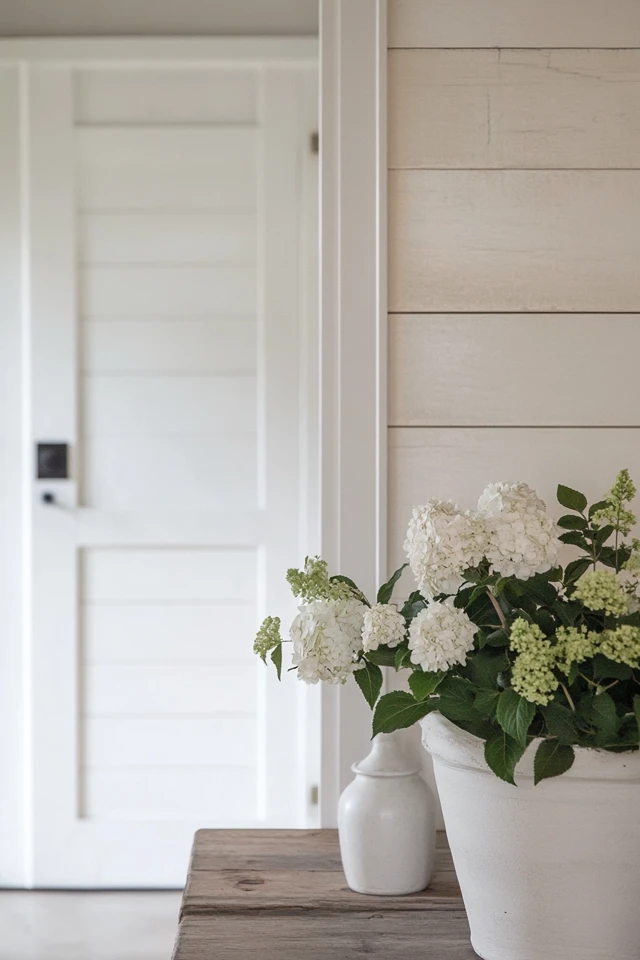
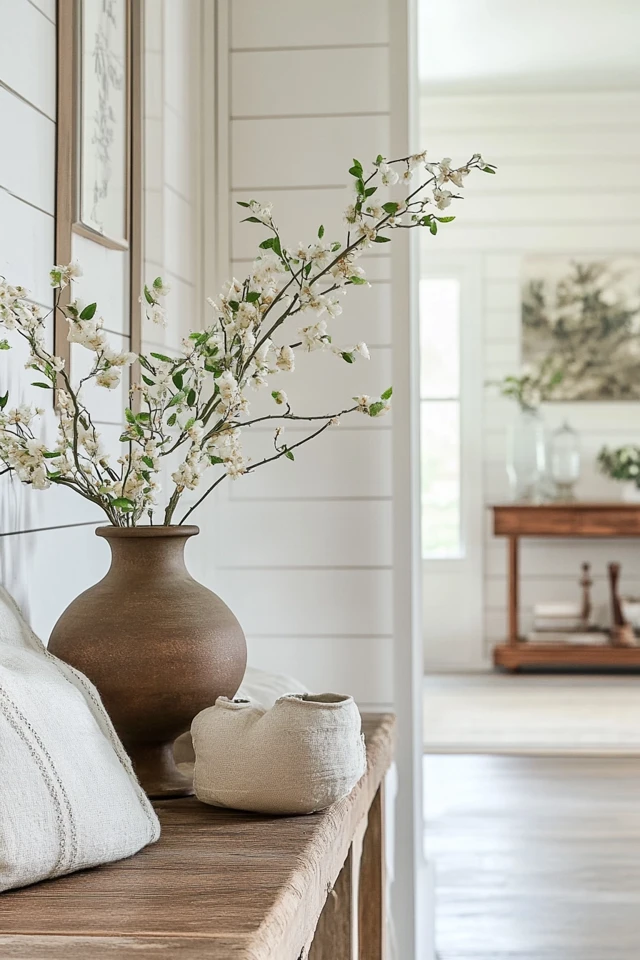
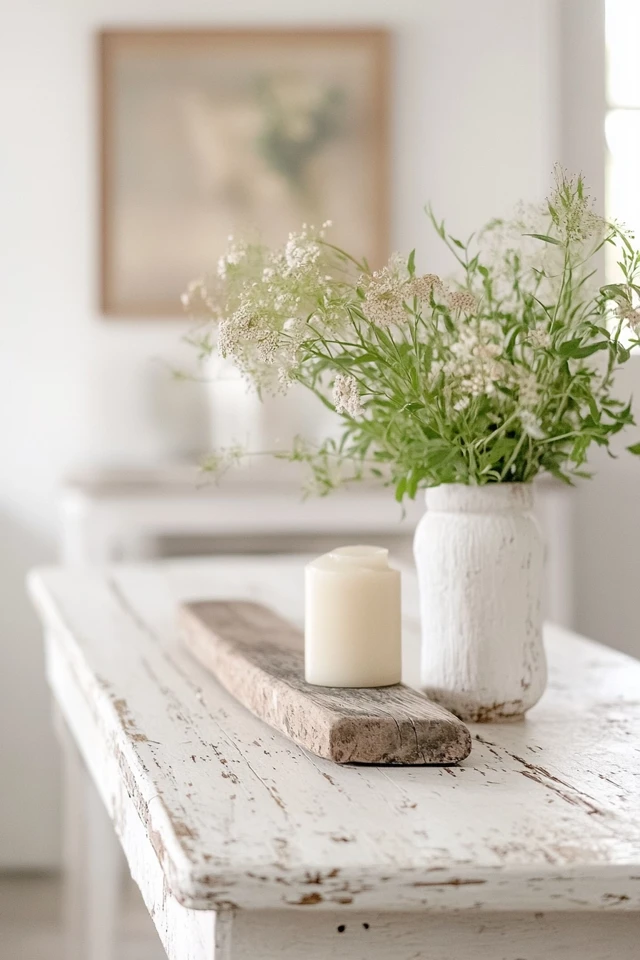
Decorating with Whitewashed Finishes
Pairing with Other Materials
Whitewashed finishes are most impactful when paired with complementary materials. Try these combinations:
- Reclaimed Wood: Use darker wood tones to create contrast.
- Metal Accents: Incorporate black, galvanized, or brushed metal for a modern farmhouse vibe.
- Textiles: Layer in soft linens, chunky knit throws, and woven rugs for added warmth.
Color Palette
Whitewashed surfaces work best with a neutral or pastel color palette. Think shades of cream, gray, sage green, or soft blue.
Lighting
Brighten the space further with farmhouse-style light fixtures like lantern pendants, Edison bulbs, or wrought iron sconces.
Conclusion
Whitewashed finishes are the perfect way to add timeless charm and lightness to your farmhouse interiors. Whether you’re updating furniture, walls, or smaller accents, this technique allows you to create a rustic yet refined look that’s uniquely yours.
When I look around my home, the whitewashed pieces tell a story—not just of the craftsmanship, but of the transformation process. It’s incredible how a simple coat of diluted paint can bring out the character of a piece while tying the whole room together.
So go ahead, grab that old piece of furniture or look at your walls with fresh eyes. With a little effort, you can achieve the breezy, rustic beauty that whitewashed finishes bring to farmhouse design.
FAQ
What type of paint should I use for whitewashing?
Water-based or chalk paint works best for whitewashing. They’re easy to dilute and create the desired translucent effect.
Can I whitewash over stained wood?
Yes, but make sure to sand the wood first to remove any glossy finishes. This helps the whitewash adhere properly.
Do I need to seal whitewashed finishes?
Sealing is optional but recommended for furniture and floors to protect against wear and tear. Use a clear matte or satin sealant to preserve the look.
Can I whitewash brick?
Absolutely! Whitewashing brick is a popular way to soften its appearance while maintaining texture.
Is whitewashing permanent?
Whitewashing can be removed or adjusted by sanding down the surface. However, sealed finishes will require more effort to modify.

